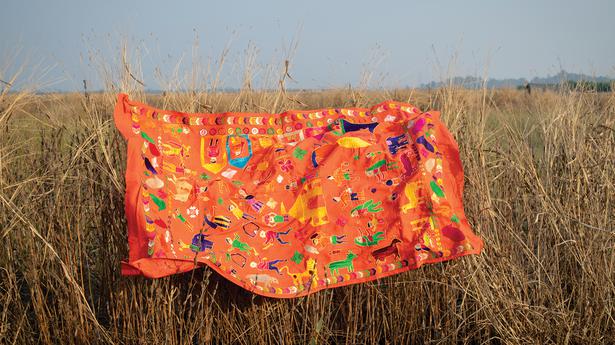
Exhibitions at Amritsar’s Partition Museum and in Delhi give us the people’s history of ‘azadi’
The Hindu
And another Partition museum is set to be launched in the capital over the coming months
Khes, particularly, was woven predominantly in western Punjab, that became Pakistan. When the great migration happened, people fleeing their homes and hearths took those beautiful fabrics across. The khes was often made by women at home. The thick, sturdy cloth had several uses — as dhurrie or something to wrap oneself up in during cold winters. It is long-lasting, as evident from the 80-year-old khes on display at the exhibition.
A video show will talk about the journey of The Khes Project, other textile traditions of undivided Punjab and about women-led craft collectives active in the State.
The Partition Museum’s next mammoth project is the launch of another Partition museum in the capital. Set up by TAACHT, the Dara Shikoh Library at Kashmiri Gate, Old Delhi, is being readied for the museum. The library is believed to have been constructed between 1639 and 1643 at a cost of ₹400,000 by Emperor Shah Jahan’s son, Dara Shiko. Since then, it has weathered many storms, including Nadir Shah’s invasion in 1739, and the Rebellion of 1857, and yet stands, though barely, to tell the tale.
The heritage building and its gardens have been restored by the government and handed over to TAACHT. The museum should be up and running in the next few months. On August 14, there will be a simple lighting of candles at the site.
According to Desai, the Delhi museum will focus on the myriad ways the Indian capital has transformed since 1947. “A huge number of Delhiites are people whose parents/ grandparents migrated to Pakistan. So, while the history of Partition remains the same, the narratives here are different from those in Amritsar,” she says.
Interestingly, Deepak Luthra, the person involved in landscaping the gardens around the heritage structure, has close ties to the Partition. “Deepak’s father crossed the border and arrived in Delhi with nothing and rebuilt his life from scratch,” says Desai.
Many more such stories and other remnants from 1947 will lend themselves to a historic people’s exhibition at the museum. “We have been gathering a lot of materials from different parts of the country for the past five years. A lot of the exhibits and narratives have been donated by Partition survivors and their families,” Desai says.













